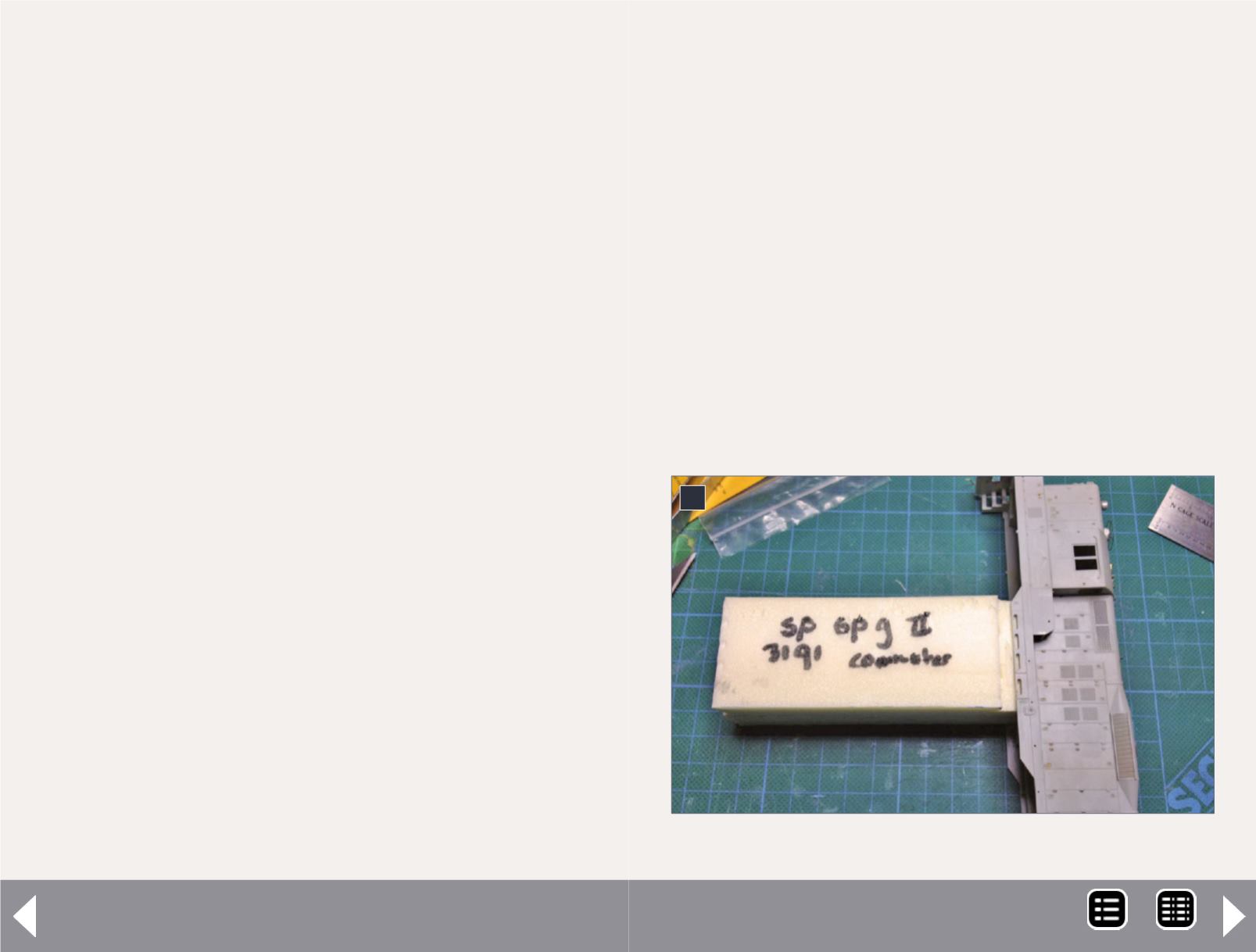
SP GP9 commuter loco - 2
operations. I have no space for long passenger trains, so a com-
muter service would fit better. What better to model than
an Espee commute train, consisting of a lone GP9 and two to
three bi-level passenger cars? With the recent re-release of the
Walthers model of these cars, I decided to buy two of them. All I
needed then was motive power.
I had two older Life-Like GP9 models in Pennsy colors in boxes,
and I toyed with the idea of turning these into SP locomo-
tives. Both were Phase III GP9’s, with the three large radiator
and dynamic brake fans on the roof. Most dedicated commute
GP9’s were Phase II, which had the one large brake fan, and
four small fans. Luckily a friend at the local club had a Phase II
he wanted to swap for a Phase III. I gave him my Pennsy, and I
got a UP in return.
Preparing for modifications
First, I stripped the shell of all separately applied detail parts,
and then stripped the paint off using a product called Model
Strip. After soaking the shell for about 10 minutes, I could see
the paint starting to let go, so I started scrubbing it with a me-
dium toothbrush. This got most of it off. I then washed the shell
using soapy water, and dried it. I found a few stubborn patches
of paint left, so I repeated the Model Strip treatment on those
isolated areas. This got the last of it removed.
I compared the bare shell it to photos of my chosen subject SP
3191, a GP9 commute locomotive, one of the few that had a
five-chime Nathan P5 horn on the cab roof.
The Internet is a great resource for modelers like me who model
something they never saw in real life, either because it’s of an
era that has gone by, or it is of a country or distance that is not
exactly on your doorstep. Both apply to me.
Using various photo websites I found a selection of images of my
chosen commute Geep.
There were some obvious differences in details between my
shell and the photos. The most important were an additional
filler cap on the sill above the fuel tank, different louvre arrange-
ments on the battery box doors, and some louvres on the short
hood that were not on the model at all.
Aside from that, there were some details I wanted to improve.
I wanted finer grabs on the hoods, and also wanted to replace
the roof fans with the great models made by Cannon & Co. At
the time I started this build, these had only just become avail-
able on the market. The handrails and m.u. hoses present on the
model were fine for my liking, also keeping in mind that this loco
would be handled from time to time at the club. It could not ,
and therefore shouldn’t be a fragile display model; this one was
going to work for a living!
2
2. The shell before cutting out the sill.
MRH-Sep 2014


